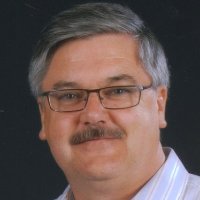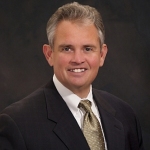|
The International Society of Automation (ISA) has announced the recipients of its 2015 author awards presented annually by ISA’s Publications Department.
“Each year, ISA is proud to recognize and thank all of the talented authors and contributors who help develop, review and deliver outstanding ISA publications and technical resources to automation and control professionals throughout the world,” said Susan Colwell, director of ISA’s Publications Department and Publisher of ISA’s InTech magazine.
Winners are recognized for their editorial contributions to a wide range of ISA publications, including ISA books; InTech, ISA’s bi-monthly magazine for automation and control professionals; and ISA Transactions, ISA’s bi-monthly professional journal dedicated to the science and engineering of measurement and automation.
Winners will be honored at an awards luncheon at ISA’s Fall Leaders Meeting, 10-13 October in Louisville, Kentucky, USA. The luncheon will take place on Monday, 12 October.
Awards and award recipients
The Keith Otto Award
 The Keith Otto Award recognizes the author or authors of the best article in InTech magazine. The award was presented to Leif Poulsen for his article, “Life-cycle and long-term migration planning: Successfully upgrading and replacing systems in a running production environment,” which appeared in the January/February 2014 issue of InTech. The Keith Otto Award recognizes the author or authors of the best article in InTech magazine. The award was presented to Leif Poulsen for his article, “Life-cycle and long-term migration planning: Successfully upgrading and replacing systems in a running production environment,” which appeared in the January/February 2014 issue of InTech.
Poulsen is the senior specialist of automation and IT at NNE Pharmaplan. He holds a master’s degree and a doctorate degree in process engineering and is certified as a professional enterprise architect according to the TOGAF 9 standards. At NNE Pharmaplan, Poulsen is responsible for the development of technology, methods, and competencies within automation and IT and works as a senior business consultant for customers worldwide.
He is an expert on business analysis and conceptual design of automation and IT solutions, including how to deploy such solutions effectively in a GxP regulated organization. He is an active member of ISA88 and ISA95 standards committees.
The Nels Tyring Award
The Nels Tyring Award recognizes the author or authors of the best published article in one of the Society’s journals. Allan Kern is this year’s recipient for his article, “Multivariable control performance: The case for model-less multivariable control,” which appeared in the July/August 2014 issue of InTech.
Kern, P.E., possesses more than 35 years of process control experience. He has authored numerous papers on topics ranging from field instrumentation, safety systems and loop tuning to multivariable control, inferential control and expert systems.
From 2001 to 2008, Kern served as automation leader at a major Middle Eastern refinery, where his responsibilities included deployment and performance of multivariable control systems. Since 2005, Kern has published more than a dozen papers on multivariable control performance. In 2012, he became an independent process control consultant serving clients worldwide.
The Raymond D. Molloy Award
 The Raymond D. Molloy Award is presented annually in honor of Raymond D. Molloy’s contributions to the automation profession. Molloy was dedicated to the ISA publications program for more than 20 years, maintaining a keen interest in developing high-quality publications that met the needs of measurement and control professionals. This year’s award recipients are Terrence L. “Terry” Blevins, Deji Chen, Ph.D., Mark Nixon and Willy Wojsznis, Ph.D., whose book, Wireless Control Foundation: Continuous and Discrete Control for the Process Industry, outsold all other ISA books published in 2014. The Raymond D. Molloy Award is presented annually in honor of Raymond D. Molloy’s contributions to the automation profession. Molloy was dedicated to the ISA publications program for more than 20 years, maintaining a keen interest in developing high-quality publications that met the needs of measurement and control professionals. This year’s award recipients are Terrence L. “Terry” Blevins, Deji Chen, Ph.D., Mark Nixon and Willy Wojsznis, Ph.D., whose book, Wireless Control Foundation: Continuous and Discrete Control for the Process Industry, outsold all other ISA books published in 2014.
• Blevins, principal technologist in the applied research team at Emerson Process Management, has been actively involved in the application and design of process control systems throughout his career. He was instrumental in the establishment of Emerson Process Management’s Advanced Control Program. From 1998-2005, Blevins served as the team lead for the development of DeltaV advanced control products. From 1994-2013, he was the Fieldbus Foundation team lead for the development and maintenance of the Function Block Specification and editor of the SIS Architecture and Model Specifications.
He is the US expert to the IEC SC65E WG7 function block committee that is responsible for the IEC 61804 function block standards. He is a voting member and chairman of ISA SP104-EDDL (Electronic Device Description Language) committee and is the technical advisor to the United States Technical Advisory Group (USTAG) for the IEC65E subcommittee. He is also a member of the USNC TAG (IEC/SC65 and IEC/TC65).
He co-authored the following best-selling ISA books: Advanced Control Unleashed (2002), Control Loop Foundation (2010), and Advanced Control Foundation (2012). He has more than 50 patents and has written more than 80 papers on process control system design and applications. He received a bachelor of science degree in electrical engineering from the University of Louisville in 1971 and a master of science degree in electrical engineering from Purdue University in 1973. In 2004, he was inducted into Control Magazine’s Process Automation Hall of Fame. Blevins is an ISA Fellow.
• Dr. Chen recently joined Tongji University as a professor at the Computer Science Department. His research will be focused on the industrial Internet, which is the continuation of his work at Emerson Process Management, where he was a member of the DeltaV future architecture team. Chen has been involved in process automation for almost two decades. He was among the first people who created OPC, and has worked on different fieldbuses, including WirelessHART.
He co-authored the first definitive book, WirelessHART: Real-Time Mesh Network for Industrial Automation (2010), and translated the ISA best-selling book, Control Loop Foundation – Batch and Continuous Processes, into Chinese (2012). In 1999 he received a doctorate degree from the University of Texas at Austin; his thesis was titled, “Real-Time Data Management in the Distributed Environment.” Chen is an IEEE senior member and an ISA senior member.
• Nixon,director of applied research at Emerson Process Management, has been involved in the process industries throughout his career. He started his career as a systems engineer working on projects in oil & gas, chemicals, and pulp & paper. He moved from Canada to Austin, Texas in 1988 where he has held various positions in both research and development.
From 1995 through 2005 Nixon was lead architect for DeltaV. In 2006 he joined the wireless team, taking a very active role in the development of WirelessHART and IEC 62591. His current research includes control, data analytics, wireless, low power, virtualization, and operator interfaces.
He has co-authored the following books: WirelessHART Real-Time Mesh Network for Industrial Automation (2010), Control Loop Foundation for Batch and Continuous Processes (2010), and Advanced Control Foundation (2012). He holds more than 85 patents. In 2012 he was inducted into Control Magazine’s Process Automation Hall of Fame. Nixon is an ISA Fellow. He received a bachelor of science degree in electrical engineering from the University of Waterloo in 1982.
• Dr. Wojsznis, senior technologist at Emerson, has been involved in the development of advanced control products over the last nearly 25 years, focusing on model predictive control, auto tuning and data analytics. Over the previous 25 years of his career, he worked on developing computer control systems and applications. His professional work resulted in a number of successful and innovative advanced control products, more than 40 patents, and more than 50 technical papers.
He received a control engineering degree (EE) from Kiev Technical University in 1964, a master of science degree in applied mathematics from Wroclaw University in 1972, and a doctorate degree from Warsaw University of Technology in 1973. He co-authored two best-selling ISA books: Advanced Control Unleashed (2002) and Advanced Control Foundation (2012).
In 2010, Wojsznis was inducted into Control Magazine’s Process Automation Hall of Fame. He is an ISA Fellow.
ISA Transactions Best Paper Award
 ISA Transactions Best Paper Award recognizes the best technical paper published in ISA Transactions, the ISA professional journal dedicated to the science and engineering of measurement and automation, over the previous year. ISA Transactions Best Paper Award recognizes the best technical paper published in ISA Transactions, the ISA professional journal dedicated to the science and engineering of measurement and automation, over the previous year.
This year’s award recipients are Junyong Zhai, Ph.D., and Wenting Zha. Their winning paper, “Global adaptive output feedback control for a class of nonlinear time-day systems”, ISA Transactions, Vol. 53, Issue 1,” was judged to be the best paper published in the journal in 2014. (ISA members have free online access to ISA Transactions. Non-ISA members can learn more about the journal by clicking here.)
• Dr. Zhai received his doctorate degree in automatic control from Southeast University in Nanjing, China in 2006. From September 2009 to September 2010, he was a postdoctoral research fellow at the University of Texas at San Antonio. Currently, he is a professor at the School of Automation, Southeast University. Dr. Zhai has published more than 100 technical papers. His current research interests include nonlinear systems control, stochastic time-delay systems and switching control.
Zha is a doctoral student at the School of Automation, Southeast University. From September 2014 to September 2015, she was a visiting doctoral student at the University of Texas at San Antonio. Her current research interests include stochastic nonlinear control, finite-time control and adaptive control.
|
 In early November (2018), the International Electrotechnical Commission held the first meeting of a new IEC systems committee on smart manufacturing in Frankfurt (D). An IEC systems committee is intended to set high-level interfaces and functional requirements that span multiple work areas across the IEC and its partner, the International Organization of Standardization (ISO), to achieve a coordinated standards development plan.
In early November (2018), the International Electrotechnical Commission held the first meeting of a new IEC systems committee on smart manufacturing in Frankfurt (D). An IEC systems committee is intended to set high-level interfaces and functional requirements that span multiple work areas across the IEC and its partner, the International Organization of Standardization (ISO), to achieve a coordinated standards development plan.


 Posted by Eoin Ó Riain
Posted by Eoin Ó Riain 



 Brian J. Curtis (G E Healthcare) Cobh, County Cork, Ireland (right), is one of the candidates this year. He has an impressive leadership background both in the automation industry and in other sectors industrial, commercial and recreational. He has 35 years Pharmaceutical Control Systems experience.
Brian J. Curtis (G E Healthcare) Cobh, County Cork, Ireland (right), is one of the candidates this year. He has an impressive leadership background both in the automation industry and in other sectors industrial, commercial and recreational. He has 35 years Pharmaceutical Control Systems experience. Voting in the Leadership Elections is relatively easy. Go to the
Voting in the Leadership Elections is relatively easy. Go to the

 Both threads came together for much of the event mirroring the similarity of many of the technologies and requirements of each sector.
Both threads came together for much of the event mirroring the similarity of many of the technologies and requirements of each sector.












